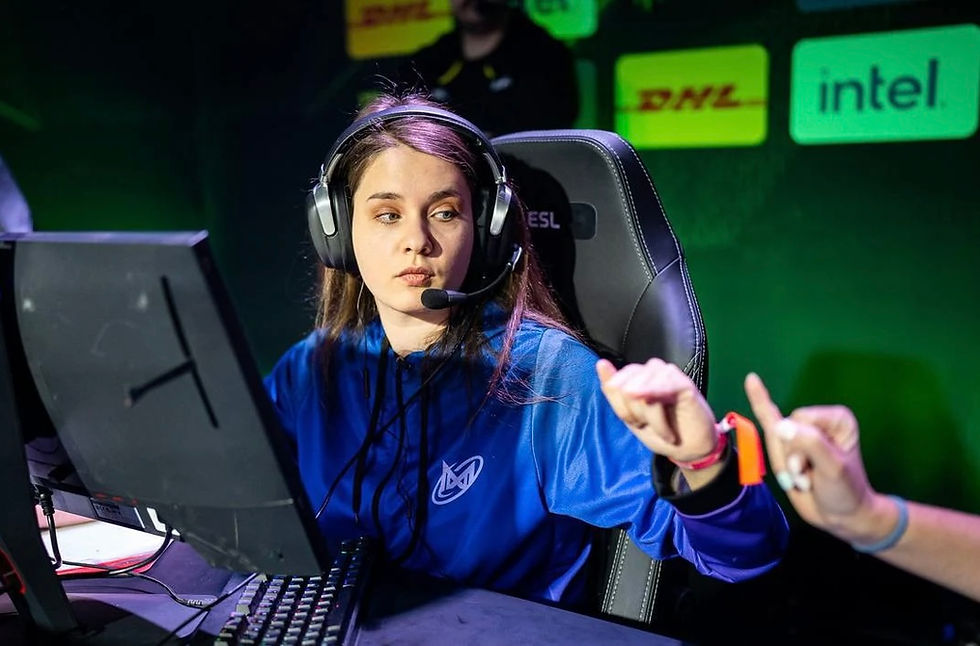Romanian Wins Best Female Counter-Strike Player in the World for Third Consecutive Year
- Dia Radu

- Jan 27
- 2 min read

Ana Dumbrava, a 25-year-old from Romania, made history this January by being named the best Counter-Strike player in the world for the third consecutive year. She received the prestigious award in Belgrade during the Half-Life Television Gala, often referred to as the Oscar ceremony for Counter-Strike players worldwide. Her team, Imperial, was also honored as “Best Team of 2024”, marking another significant milestone in the already decorated career of the sniper.
Born in the small town of Radauti, in northern Romania, Dumbrava’s passion for gaming began early. Introduced to the world of gaming by her older brother, she moved from casual games like FIFA and Need for Speed to Counter-Strike at a young age. It was Counter-Strike: Global Offensive that set her on the path to international competitions, and by 2015, she was already making her mark in professional gaming.
Her success, however, hasn’t come without struggles. With a roughly 9% female fan-base (based on social media followings) and only a few females at the top, Counter-Strike remains a male dominated environment where gender-based discrimination is still very present. “It’s hard when you’re constantly told that you don’t belong here,” Dumbrava told The Glass Room. “But I use any form of discrimination as an extra motivation to prove that I deserve my place. This year, my team was invited to participate in a major competition dedicated to men, where we did well. So, I will continue to fight and improve my performance.”
The financial rewards in these competitions mirror the disparity, with the prize pools for major male Counter-Strike competitions reaching up to 2 million euros, while the prize pools for female-only competitions are significantly smaller, typically one or two zeros less.
Despite the persistent inequities, Dumbrava, known in the gaming world as ANa, has managed to defend the top position for three years in a row. Her manager, Toma Nicolau, attributes her success to an intense and demanding training regimen. “Ana trains for seven to eight hours a day. It’s not just about gameplay. The practical training is always followed by video analysis where the opponents are studied. After that, she engages in strategic preparation, refining action plans for each scenario. The coordination between teammates makes the difference. It’s a very complex game with mental challenges, but Ana thrives under it.”
The gameplay is often intense and violent, with players taking on the roles of Terrorists or Counter-Terrorists to plant bombs or rescue hostages. Yet, Dumbrava seems unaffected by the harsh mechanics. “I wouldn’t describe it as something that takes a toll on my well-being. I stay socially active, travel, and get along really well with my teammates, and this keeps me grounded.”

Released in 1999, Counter-Strike became one of the world’s most popular video games. Valve, its developer, highlighted its peak when nearly 1.5 million players were online simultaneously, battling for supremacy.
The game’s rise as an eSport began in 2001 when the Cyberathlete Professional League hosted one of its first tournaments, recognizing Counter-Strike as a competitive, skill-based activity with competitions and professional leagues, just like any other sport. “For me, Counter-Strike is like chess,” says Dumbrava. “Both are mental sports. Our weapon is the brain.”



Comments